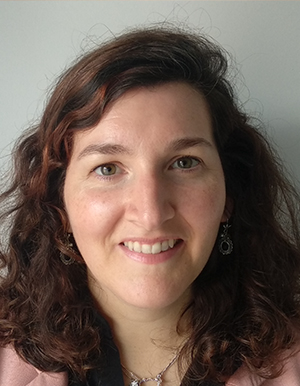Ana Pina Lab

 |
The lab works at the interface of chemistry and biology with a focus on the use of supramolecular peptide chemistry to understand the complexity of biological systems. This complexity arises from chemical reactions networks often involving molecular interactions between proteins, and phase transition towards compartmentalization. |
|
Ana Pina Phone (+351) 214469 566 | Extension 69566 |
|
 |
Research Interests
Peptides are components of the biological systems and present a vast chemical information that can be modulated to perform life-like functions with reduced overall complexity. In addition, multicomponent peptide interactions can evolve to more complex, dynamic, and functional systems, providing a mean to understand the complexity and organization of biological systems.
Our lab aims to comprehend the dynamics of the peptide motifs’ interactions with the intention to control/create self-assembly and function (e.g., catalysis and supramolecular recognition), to understand compartmentalization and ultimately program complexity in peptide systems by creating artificial compartments with simplified emergent behaviours (e.g., cell-to-cell communication, metabolism).
Our lab has three main lines of research:
-
Functional peptide-based materials: Peptide nanotechnology can be used to discovery/design of dynamic-encoding functions of peptides leading to functional assemblies. Our lab is inspired by the organization of the collagen triple-helix to create dynamic peptide scaffolds to interfere and target biological assemblies, and to incorporate catalytic activity.
-
Understand membraneless cellular compartmentalization using peptides as model systems: Living cells remarkably organize their complex biochemical reactions by creating compartments for chemical reactions to take place. These so-called membraneless organelles are a direct result of macromolecular liquid-liquid phase separation. Phase separation is often seen with proteins that bind nucleic acids. These Intrinsically disordered proteins are composed by low complexity minimal peptide regions, that are known to play a role in protein phase separation. Our lab aims to understand the molecular principles that govern phase transition focusing our attention at the peptide motifs from naturally occurring phase-separating proteins.
-
Peptide-mediated approaches to build artificial cells with programmable complexity at peptide sequence level. By providing fundamental knowledge about the sequence-disorder-phase transition, then our lab aims to program peptides into functional artificial compartments as protocells mimetics.
The capability of the compartments to sense and sequester molecules in the exterior environment and trigger key simplified and interconnected biochemical reactions inside the compartments, will be studied for further applications in biomedical diagnosis, bioelectronics applications.
Group Members
- Joana Calvário, PhD Student
- David Reis, PhD Student
- Francisco Seco, Research Assistant
- Sandro Amador, Research Assistant
- Diogo Antunes, Undergraduate student
- Inês Chibeles Antunes, Undergraduate Student
Selected Publications
-
Calvário J, Antunes D, Cipriano R, Kalafatovic D, Mauša G, Pina, AS*. Investigating Amino acid Enrichments and Patterns in Phase-Separating Proteins: Understanding Biases in Liquid-Liquid Phase Separation. bioRxiv (2024).
-
Reis DQP, Pereira S, Ramos AP, Pereira PM, Morgado L, Calvário J, Henriques AO, Serrano M, Pina AS*. Catalytic peptide-based coacervates for enhanced function through structural organization and substrate specificity. Nat Commun 15, 9368 (2024).
-
Pina AS*, Morgado L, Duncan KL, Carvalho S, Carvalho HF, Moreira IP, Kalatatovic D, Barbosa AJM, Mariz BP, Fautino, BMM, Pappas C, Wang T, Narang V, Ferreira I, Roque ACA* and Ulijn RV* Discovery of phosphototyrosine-binding oligopeptide with supramolecular target selectivity. Chem Sci 13, 210 (2022)
-
Carvalho S, Reis DQP, Pereira SV, Kalafatovic D, Pina AS*. Catalytic peptides assemblies: challenges between simplicity and functionality. Isr J Chem 62, e202200029 (2022).
-
Pappas, GC*, Wijerathne, Sahoo JK, Jain A, Kroiss D, Sasselli IR, Pina AS, Lampel A and Ulijn RV* Spontaneous aminolytic cyclization and self- assembly of dipeptide methyl esters in water. ChemSystemsChem (2020)
Laboratory's Website
For further information please visit the laboratory's website: anapinalab.com
Sistemas Peptídicos inspirados na natureza (PT)
Os sistemas biológicos são compostos por várias entidades de elevada relevância funcional e estrutural, entre elas os péptidos. Estes apresentam uma vasta informação química que pode ser modulada de forma a realizar funções que ocorrem nos sistemas biológicos, mas com complexidade reduzida. Adicionalmente, a interação entre motivos peptídicos pode levar à evolução para sistemas mais complexos funcionais e dinâmicos, que permitem compreender a organização dos sistemas biológicos, tal como a compartimentalização sub-celular. Este processo é guiado por proteínas intrinsecamente desordenadas, compostas por regiões de péptidos com baixa complexidade, que sofrem separação de fase líquido-líquido.
Nesse sentido, o laboratório visa compreender a natureza das interações entre motivos peptídicos com a intenção de controlar/criar estrutura e a função (p.ex., catálise e reconhecimento supramolecular), e usar péptidos como sistemas modelo para estudar os princípios moleculares subjacentes à separação de fase, com o objetivo de criar compartimentos artificiais minimalistas com comportamentos emergentes.







